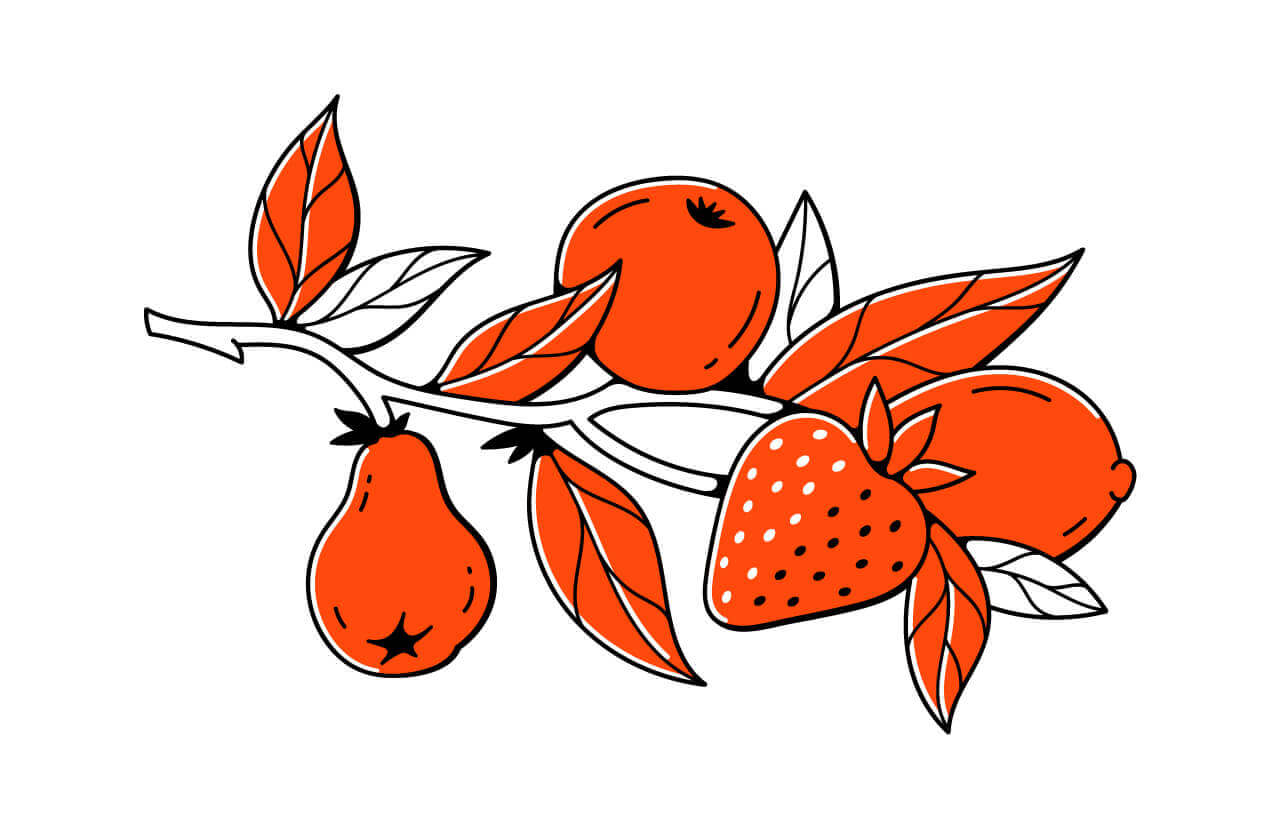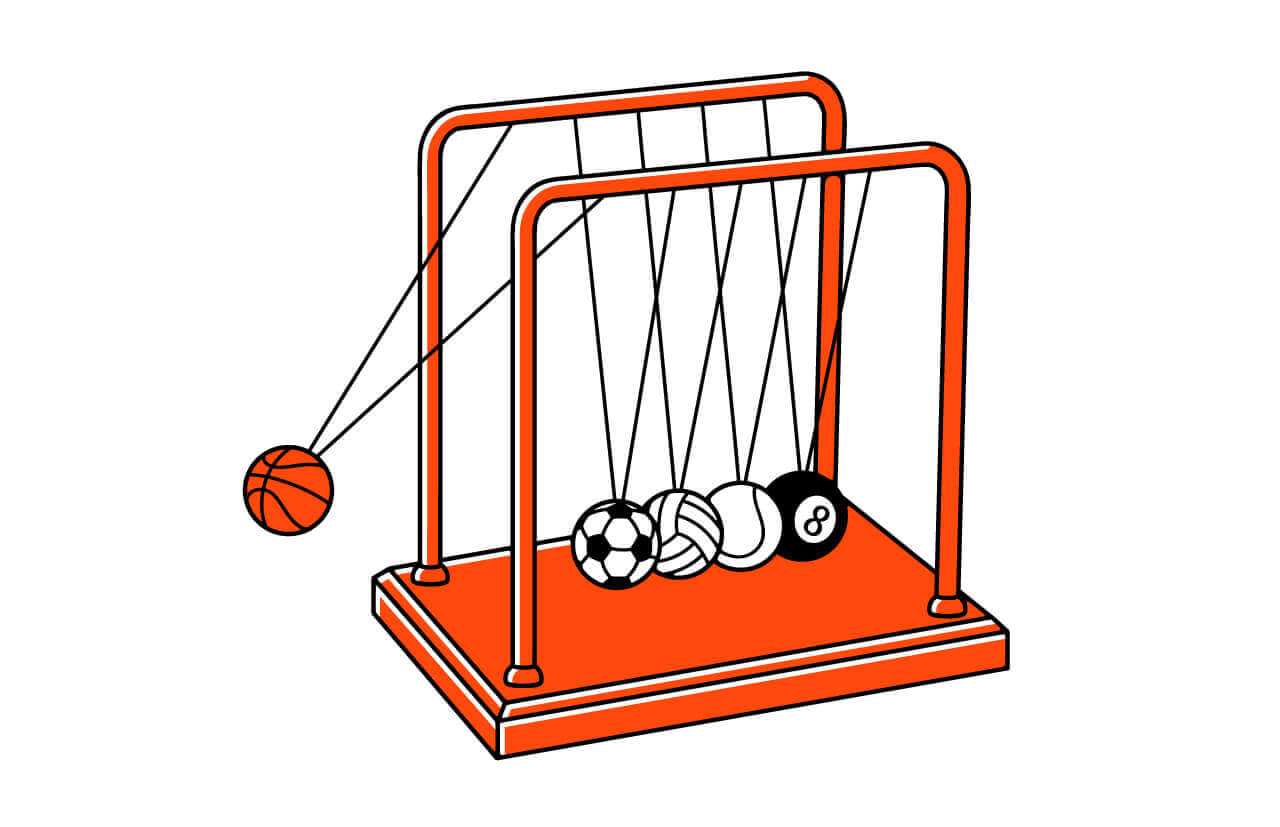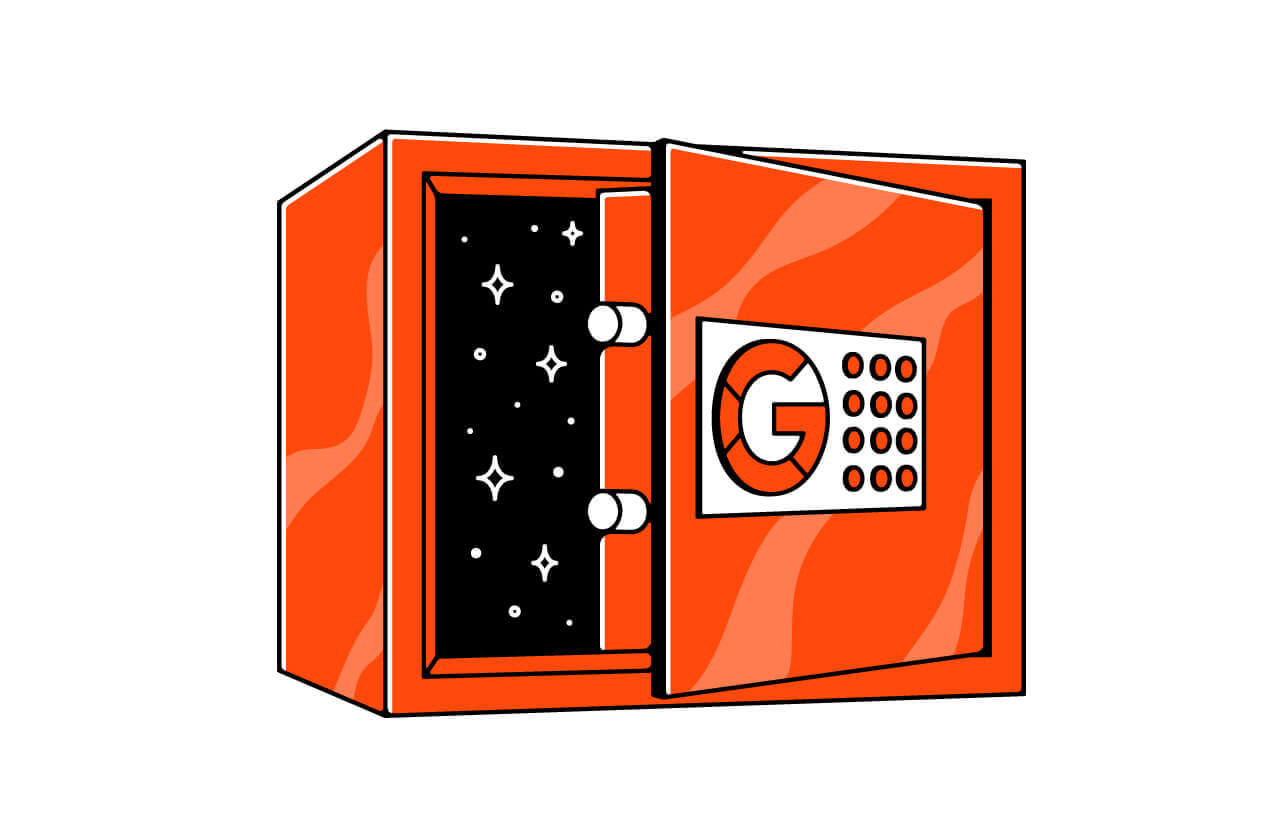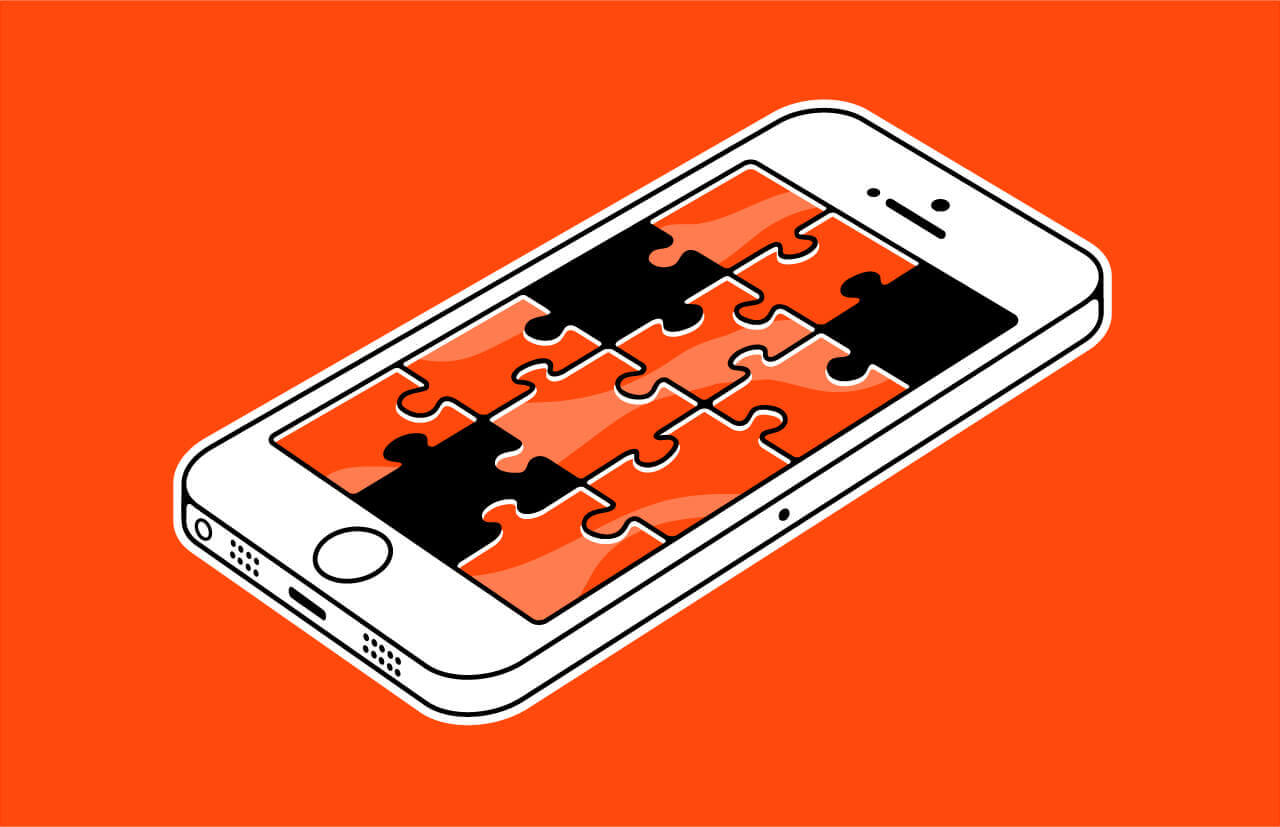Whether you’ve just started hiring or already have a fully fledged product design team, you already know this one fact: hiring for design is hard. We mean, really hard.
If there’s one thing that our experience as startup mentors at accelerators like Techstars and Seedcamp has taught us, it’s that building product design teams is tricky, with most designer searches taking more than six months.
To help demystify the process, we’re going to share the insights we gained during our five-year experience with dozens of startups. After interviewing more than 800 creative professionals this year, we’ve got both quantitative and qualitative material for an ultimate guide on how to build a strong product design team.
The two product designers every startup needs
Let’s start with the basics: what types of product designers are there, and which one do you need?
For all startups, there are two guys who are essential to the product design process at different points. Let’s take inspiration from the pros and call them Design Explorer Whitney and Design Maker Steve.
Discovery stage: Design Explorer
Every design task starts with explorations and discoveries. This is the first part of the design process we call the "Discovery stage". This is the point when you research the market, perform a product investigation, and come up with the first design ideas.
At this project stage, you need to research the market, perform a product investigation, and come up with the first design ideas. At this project phase, you should be looking for Design Explorer Whitney. She usually designs fast, but not as scrupulously as Design Maker Steve.
However, Whitney is extremely good at researching the industry and trends. She can create a pool of design findings that will help you choose the best concept for a successful product. Whitney is all about speed over meticulous execution.
Design asset creation: Design Maker
The second part of any design task is creating design assets. Enter Design Maker Steve.He’s skilled in building and maintaining a large design system that might consist of a few hundred screens, a few dozen icons, and a handful of landing pages. Steve will help you organize a product-design process, prepare all the documentation, and come up with solutions to implement concepts created by Design Explorer Whitney.
Design makers like Steve stay with a startup during its entire lifecycle and scale up with the project. For example, after a startup is funded, you’ll need to design a new website and iOS app (if you’ve only had an MVP on Android before). A design maker can help you manage all of these things.

critical web design mistakes to avoid
The design hiring questions every startup asks themselves
Q1: Who do I hire and when?
A startup lifecycle usually embraces the following stages: an MVP, seed round, series A, series B or later, and an IPO (initial product offering). At each milestone, a company faces different design problems and requires various combinations of design skills.
Only bring on one design explorer at the MVP stage
At the MVP stage, you’ll likely need only one design explorer who can quickly perform product research and generate a load of good ideas. This person should be able to develop an impressive and workable prototype in the shortest amount of time.
Combine a design explorer + design maker after the seed round
A startup has already developed an initial design system, but still explores new concepts to evolve an MVP. You realize that life in creative chaos is no longer possible.
A startup faces an urgent need for a professional that can put all design assets in order and create guides for software engineers. At this point, you should have both a design explorer and a design maker in a team.
Onboard a design explorer + several design makers after Series A
Now, your startup has even more design assets, and the product should quickly scale. For instance, your iOS-based MVP should expand to Android and web to address all customer needs. It’s difficult to make progress without the help of a few more design makers at this stage.
Bring together several design explorers and many design makers for Series B or later series or even an IPO
The product continuously evolves from different perspectives including UI, UX, marketing, and revenue-generation models. A company might have to design several landing pages per month to test various marketing approaches.
Or the product may need more icons and other elements as it rapidly grows. A startup definitely has to hire more design makers to cope with all this work.
Is there a way to streamline all this hiring?
After reviewing more than 800 designer CVs this year, we realized that there is no one-fits-all solution. Every company requires a different approach depending on their budget, project stage, and product peculiarities.
Usually on the market there are two approaches to work with designers: hiring internally or outsourcing with agencies.

But what we’ve been doing with many YC or 500 startups alumni we’ve been working with is actually combining these two approaches!
You can hire full-time designers and simultaneously collaborate with design agencies to close a knowledge gap when your internal team lacks specific expertise. Or engage a freelance designer to help your startup complete a particular project stage.
Working only with design agencies is not the best option for startups, and here’s why: during our talks with investors, we realized most of them are more likely to fund startups with full-time designers rather than those working with agencies because a startup with in-house employees has better valuation.
The case study that proves the power of agile hiring
Humbleteam had to create a mobile app design for a big Pakistani digital bank. We developed cool graphic design know-how, but we lacked contextual experience in designing for local people. Luckily, they found a fintech designer based in Saudi Arabia with a comprehensive understanding of customer needs and banking app patterns specific to that region. We created an application collaboratively: he advised us on the context-related issues and we crafted the overall design.
Q2: How can startups compete with big companies to attract the best talent?
Startups usually struggle to hire good designers for an internal team because they’re competing with big employers like Google, Uber, Airbnb, and so on. Most designers tend to jump at job offers from large corporations since they provide higher salaries, lower risks, a good social package, and a sense of prestige associated with the work at a famous brand.
Hiring professional and experienced designers isn’t easy, especially as a startup without a big name or big perks to attract talent. But there are ways to overcome this challenge and hire amazing talent:
Offer a favorable environment for professional growth. Usually, designers join a startup to challenge themselves to create something new, shape industry trends, and make a deeper impact in the process. So, emphasise these huge opportunities in your job ad.
Look for designers that want to try out a new niche. Another motivation for designers to join startups is their goal to make a transition to another professional vertical. For example, a very experienced fintech designer wants to try working on healthcare application and such a designer could be a great candidate for you. They have great understanding of general design principles and they just need to acknowledge some basic healthcare stuff to become ultimate health-tech professionals.
Q3. How can a startup founder recognize a good designer?
A candidate might have an appealing portfolio on Dribble or Behance, but that doesn’t necessarily mean they know how to solve complex design problems and scope basic business requirements. So how do you know you’re hiring the right person?
Create a test task
Define your specific design needs right now.

Create a test task that will help you check the appropriate skillset. Keep in mind that a task should be fast to complete (no more than 4 hours for sure, it means designing no more than 2-3 mobile app screens or 1-2 sections for the website), while also examining multiple design skills simultaneously. Most candidates simply bypass companies if they perceive that they’re being asked to complete time-consuming tasks for free (another approach is to send a big task and offer money, tho).
What is the design task we use? Recently we asked candidates to design a widget (we ask to design a widget, not the app screen to make the task less time-consuming) to buy bus tickets. Here are the solutions developed by two of the designers:
Solution #1 on the left side includes a single app screen. The second solution on the right is a 27-slide presentation that covers problem research, the scope of requirements, investigation of user devices, and much more. This is how a simple test task can help you find a person with a broader skill set and an extraordinary way of thinking.
The more candidates you interview, the more chances you have of finding the right one. Definetely not choos among 10 CVs and better review at least 100+ to get a better undesrtanding which candidates you’re able to get.
We asked a load of founders about what they pay attention to when hiring a product designer. Most of them said that it’s 1) visual design and 2) product thinking. But this answer misses a range of other important skills.
At Humbleteam, we approach a design hiring process more comprehensively assessing a candidate’s competence across 12 types of skills (see image below). Without considering all of them, employers take a risk of hiring someone who lacks knowledge and experience that are key to the product design process. On the other hand, they may lose a professional who excels in a very specific niche but doesn’t have mastery across all design skills.
The biggest mistakes startups make (and how to avoid them)
1. Hiring people that don’t share your goals
Most startups aim to iterate on products as fast as possible. It allows them to test different ideas and engage investors in the shortest amount of time. You will need to hire a designer that shares your vision and can help you deliver on these business goals. In larger companies, designers sometimes have a month to only develop a few screens.
On the contrary, a month of startup life may bring a full pivot in the product concept or even a complete team restructuring. It’s crucial to clarify your business objectives at the very beginning and confirm that the designer’s personal goals match yours during the first interview.
2. Hiring “cheaper” designers
Startups may be tempted to hire cheaper, but less experienced, designers due to a limited budget. But hiring cheaper candidates means necessity to teach them how to work and in many startup cases time is what you don’t have, unlike the funding.
The RIGHT way to find a product designer
We’ve already talked about how designers have different functions, and how and where to find the right specialist depends on the stage your startup is at. Hiring a practicing designer and a design team leader requires two different approaches.
Look at the whole package when hiring a practicing designer
When hiring a practicing designer, don’t just look at their CV, review their portfolio as well. This is where they showcase actual skills and knowledge. Pay attention to professional communities where designers publish their creative works, such as Dribbble and Behance. Another option is to explore freelance platforms like Upwork or Toptal since many designers often look for job opportunities there.
Sign up for the app your candidate has listed in the CV! If you don’t like the design of the app or the website — probably after hiring such a person your impression would be the same.
Use platforms like LinkedIn and Upwork to find design team leaders
All design team leaders started their careers as practicing designers. Over the years, they have occupied management positions and stopped producing new designs. Consequently, there is little chance of finding an experienced team leader on creative platforms like Behance and Dribble.
Search instead for them on business networks like LinkedIn and Upwork. In this case, a traditional CV and track record reflect more information about their actual expertise than a design portfolio. Even if you find team leaders’ creative work on the Internet, they’re likely too outdated to be insightful regarding the person’s real experience.
Key takeaways
You’ll need two types of designers for the product creation process: 1) Design Explorers for the discovery stage and 2) Design Makers to create design assets. Remember, don’t always go for the cheapest option: hiring the best talent is an investment in the future of your company. As a startup, you should be ready to face the following design hiring problems:
Problem #1. You’ll need different types of designers at various project stages.
Solution. Hire full-time designers and simultaneously collaborate with design agencies to bridge any knowledge gaps at particular project stages. Or you can engage a freelance designer with the necessary expertise to advise your internal team on a specific issue.
Problem #2. Startups compete with big employers like Google and PayPal.
Solution. To engage talented designers, offer them an amazing environment for professional growth. Look for designers that want to challenge themselves in a new niche.
Problem #3. It’s difficult to recognize a good designer.
Solution. Define your design needs and create a test task that will help you check the appropriate skillset. Choose short and simple tasks that allow you to investigate many skills simultaneously.
Product design is all about the people on both sides of the table: the product creators and the users. Hiring the right people for a project not only results in a better product, but makes for a team that will continue to go from strength to strength.
Subscribe to hear about legendary business pivots on our CTRL SHIFT podcast.





